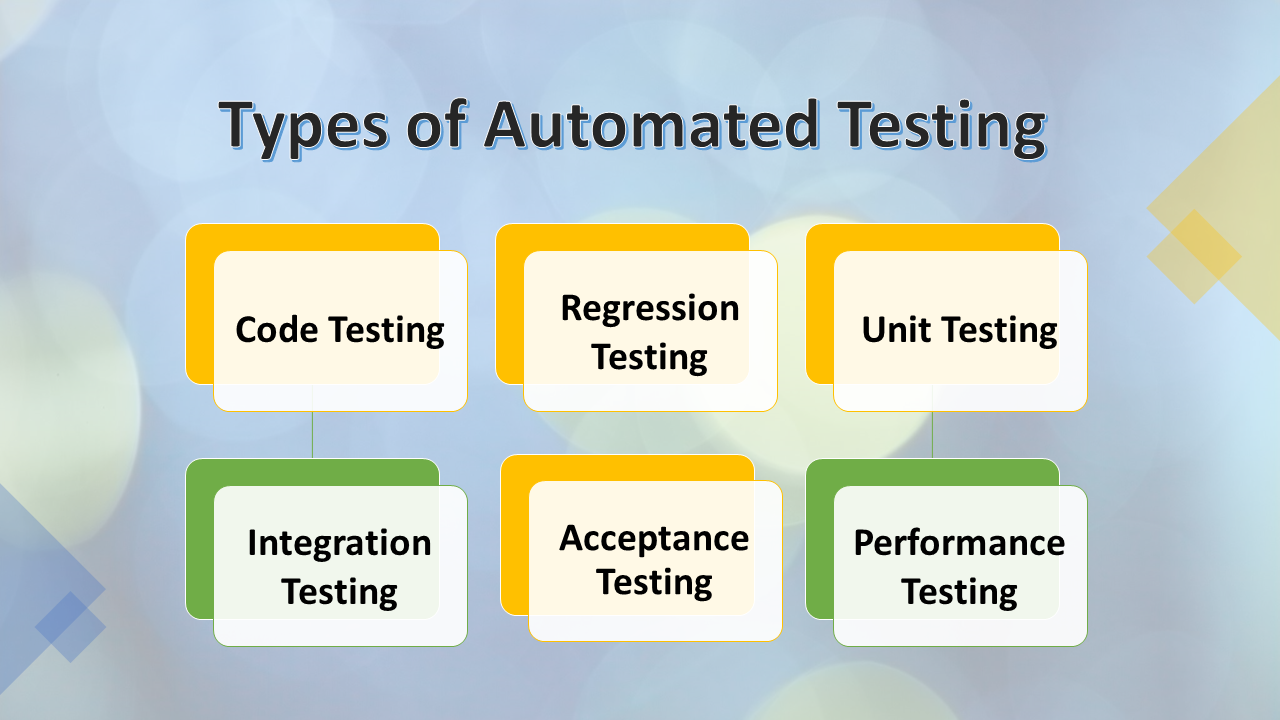Understanding Automation Testing: Devices, Methods, and Benefits
Understanding Automation Testing: Devices, Methods, and Benefits
Blog Article
From Handbook to Automated Testing: A Comprehensive Overview to Transitioning Smoothly and Efficiently
In the realm of software application testing, the shift from handbook to automated processes has become a progressively essential change for companies looking for to boost performance and precision in their testing methods. The journey from guidebook to automated screening is not without its challenges, but when approached strategically and with a clear strategy in mind, the benefits can be substantial.
Benefits of Automated Examining
Automated testing supplies various benefits, boosting effectiveness and accuracy in software advancement processes. One main benefit is the significant decrease in screening time. Automated examinations can be run simultaneously on numerous devices and operating systems, considerably quickening the testing phase contrasted to hand-operated screening. This enhanced efficiency enables faster comments on the high quality of the software, enabling designers to identify and resolve concerns promptly.
Additionally, automated testing makes sure a higher level of precision in identifying flaws. Since automated tests adhere to predefined scripts, human error is reduced, resulting in more trustworthy test results. Uniformity in screening is also improved, as automated examinations perform the very same actions precisely each time they are run. This consistency is critical in ensuring that all performances of the software application are completely tested, lowering the probability of undiscovered bugs slipping with to production.
Choosing the Right Devices

Firstly, evaluate your demands and goals. Recognize the extent of your project, the technologies involved, and the capability of your team. This evaluation will assist you establish the features and abilities you call for in your screening devices.
Secondly, consider the compatibility of the tools with your existing procedures and systems. Smooth combination with your present software program advancement lifecycle is vital to make sure a smooth transition to automation.
Additionally, review the scalability and adaptability of the devices. As your testing requires progress, the tools should be able to adjust and fit modifications effectively.
Finally, consider the support and area around the devices. When executing automated screening, robust assistance and an active customer area can provide useful sources and help. By carefully thinking about these elements, you can select the right devices that line up with your needs and established the phase for an effective shift to automated screening.
Composing Efficient Examination Manuscripts

When crafting examination scripts, it is necessary to take into consideration the certain requirements of the software being tested and make certain that the manuscripts resolve all critical performances. Descriptive and clear naming conventions for examination scripts and examination linked here cases can enhance readability and maintainability. Additionally, incorporating error handling mechanisms within the examination scripts can aid in recognizing and resolving issues promptly.
Additionally, arranging examination scripts into modular components can enhance reusability and scalability, reducing redundancy and improving effectiveness in examination manuscript upkeep. Routine evaluations and updates to examine scripts are essential to keep speed with advancing software program demands and functionalities. By following these concepts, testers can produce reliable and durable test scripts that add significantly to the success of automated testing procedures.
Integrating Automation Into Workflows
By perfectly incorporating automated testing tools like Selenium or Appium into the software program advancement lifecycle, groups can attain faster responses on code modifications, leading to quicker insect discovery and resolution. This combination permits for continual testing throughout the development procedure, guaranteeing that any issues are identified early on, resulting in greater software high quality. Appropriate assimilation of automation tools needs cooperation between advancement, screening, and procedures teams to develop a unified operations that maximizes effectiveness and performance in supplying top notch software application items.
Making Sure a Smooth Shift
Efficiently transitioning to my website automated testing involves precise planning and cautious implementation to make best use of and minimize disruptions effectiveness in the software program development process - automation testing. To make sure a smooth shift, it is necessary to start by conducting a thorough evaluation of the current screening processes and recognizing areas where automation can bring one of the most significant benefits. Engaging with all stakeholders beforehand at the same time, consisting of developers, testers, and task managers, is important for amassing assistance and buy-in for the automation effort
Interaction is key during this shift stage. Clear interaction of the goals, benefits, and expectations of automated screening assists to take care of any resistance or concerns that might occur. In addition, supplying ample training and resources for group members to upskill in automation devices and methods is vital for making sure an effective shift.

Conclusion
In final thought, transitioning from manual to automated testing supplies numerous advantages, including boosted web link efficiency and dependability. By picking the suitable tools, composing effective test scripts, and incorporating automation perfectly right into workflows, organizations can make certain a effective and smooth shift. It is important to embrace automation as a beneficial property in software application testing procedures to improve total quality and performance.
In the realm of software application testing, the change from manual to automated processes has actually become an increasingly essential change for companies seeking to improve performance and accuracy in their testing methods. Automated tests can be run at the same time on several tools and running systems, dramatically speeding up the testing phase compared to manual screening. Consistency in screening is likewise improved, as automated tests carry out the exact same actions specifically each time they are run.To ensure the successful application of picked screening devices, the production of reliable examination manuscripts plays a crucial role in confirming the capability and efficiency of automated processes - automation testing. By following these concepts, testers can develop durable and effective examination manuscripts that contribute dramatically to the success of automated testing processes
Report this page